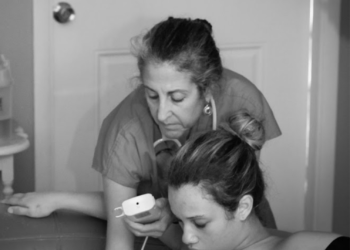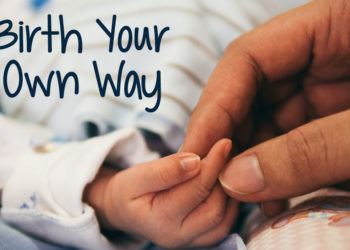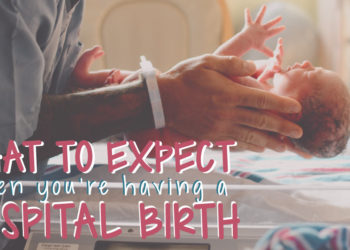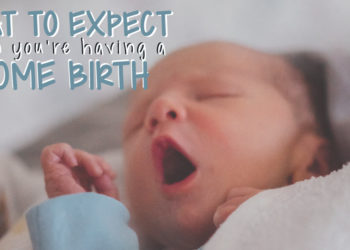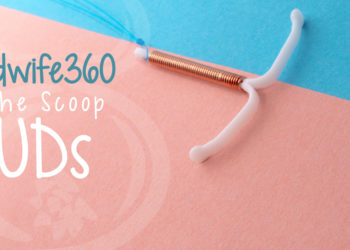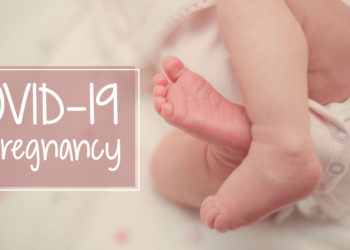So you’ve decided to have your baby in the comfort of your own home. What should you expect? As a CNM who has provided home birth services for nearly 6 years, I am going to provide you with an overview of the general expectations that await you in this experience.
We visit your home
Your provider will come to your home at least once during the prenatal period to assess home readiness for birth. We like to see that our clients have acquired all of the supplies that were recommended, including the kit of supplies that was provided by our practice. Some examples of supplies provided by the practice are sterile gauze, sterile gloves, a peri bottle, chux pads, a fish net (for pooper scooper if having water birth), a waterproof mattress cover, and potentially other items depending on the practice. The items that you are responsible for include a drinking water safe water hose, adapter for the faucet, receiving blankets for the baby and towels of various sizes, snacks for the laboring person and birth team, adult diapers or maxi pads, a waterproof covering for the floor and extra padding for under the pool. We like to see that the intended birth space is clean and clutter-free and in an intimate space where the birthing couple can get privacy if desired. It should be in close proximity to the bed and bathroom.
What happens when you go into labor?
Once you have decided that you are in labor you will be in contact with your midwife and doula. We like our clients to set up a group text with their partner, doula, midwife and assistant so communication is transparent for all involved. This way the laboring couple are not asked the same questions by different people and everyone knows what’s going on. Typically the doula will arrive first, and if the laboring person desires a cervical check to see where things are at, the midwife or assistant will come to do a labor check. We will assess her contractions, her coping, when she last ate/drank/used the bathroom. We listen to fetal heart tones, take vitals and get an overall feel for what’s going on – including the emotional environment.
Sometimes we have to reassure the partner more than the laboring person of the normalcy of the situation. If the cervical exam isn’t 4-6cm and the labor doesn’t seem to be progressing quickly, the midwife will leave and the doula may stay to help the couple perform some Spinning Babies circuits. Usually the doula will help to set up the tub when it’s time and let the couple know when it’s time to call the midwife back. At any point, if the couple wants the midwife to come, we will come and assess the situation.
Active Labor
Once the laboring person is clearly in active labor, the midwife or assistant will stay and perform checks on the baby’s heartbeat and mother’s vitals on a schedule at least every half hour. We listen for a period of time through and after the contraction to get a feel for the response of the baby to the contractions. We are watching for anything outside of the normal range as well as for specific things like maternal bleeding, fever, or lack of coping. We have many tools we can employ – depending on the midwife and her range of experience.
Our Toolbox
We use herbs, homeopathic remedies, essential oils, posture changes, and of course, hydrotherapy. We make sure she stays well hydrated, well nourished, and well rested – these three elements are crucial to avoid exhaustion which is a laboring person’s enemy. Sometimes we use alcohol to aid relaxation and sleep if mom becomes exhausted and her labor is stalling out. Once she gets rest she is much more capable of continuing and usually the labor will pick up on its own. We have found that labor has its own waxing and waning rhythms much like each individual contraction and it works much better to flow with it rather than trying to force it to conform to some ideal pattern.
A note on hospital transferring
If at any point along the way the laboring person changes her mind about being at home, for any reason, we will shift gears and transfer to the hospital setting. Of course we first assess if she is in transition as many people have doubts about their ability to birth in the crucial moments just before the baby makes his final descent. However, if we determine that she is no longer comfortable at home we will get her quickly into the car and to the hospital of her choice. We call ahead to give report and accompany her to the hospital.* Once there, we would stay until her care is fully transferred to her new care provider or until the baby comes if financial arrangements have been made.
Staying home
Most people are happy to stay home as this has been something they have prepared for physically, emotionally, and spiritually, sometimes for years. Most also birth in the tub if they have rented one and are comfortable in it.
Whether in the water or on land, baby comes out as slowly and gently as possible with lots of encouragement and coaching from the team. We have found that the slower the expulsion of the head and body, the less trauma to the mother’s vagina, labia, and perineum. Contrary to what we hear from our clients who transfer to us, we are well equipped to sew almost any tear that happens during birth. We carry Lidocaine for numbing and sutures for sewing.
“Self Starters”
Most babies are what I like to refer to as ‘self starters’. They will spit or cough and utter a birth cry and then they are breathing. Most of them do not cry as their birth has been so gentle they have no reason to cry. We know when to employ helpful measures such as postural drainage, stimulation, rescue breaths, and suctioning and are fully equipped to perform a full on cardiac resuscitation on the newborn if necessary.
I have seen 1 instance out of 250 home births, and 0 instances out of the over 1600 hospital births that I have assisted in my career of babies needing full on cardiac resuscitation. BIRTH IS A NORMAL, PHYSIOLOGIC FUNCTION OF A WOMAN’S BODY THAT RARELY NEEDS HELP FROM OTHERS. As long as the body is healthy with no underlying medical problems, giving birth outside the hospital is actually safer for the mom and the baby.
Post Birth Procedure
We keep a close eye on both mom and baby right after birth, assessing vital signs and mom’s bleeding every 15 minutes or more often as needed. We carry 3 different drugs to treat hemorrhage, and one of them, methergine, we have both pill and injectable form. We will not hesitate to call 911 if there is any emergency event that requires hospital intervention. We stay for 3-4 hours after the baby is born, assessing vital signs and the baby’s transition.
Once the placenta is birthed, we ensure that mom has eaten, showered and urinated. We perform an Eldon card so we know the baby’s blood type and can make recommendations for jaundice prevention or give Rhogam to the mom as needed for Rh negative moms. We make sure the baby is breastfeeding well and the parents are comfortable in their new roles.
Postpartum Visits
After the birth we make sure our clients know that they can call us for any problem with mom or baby and that we will be coming back to the house between 24-48 hours after the birth. At that visit, we perform the CCHD**, jaundice, and weight checks. We give the Vitamin K injection if the parents have chosen to have it. We would give the Rhogam shot if Mom is Rh negative and baby is Rh positive. We assess breastfeeding again and refer to the pediatrician if there are any concerns with the baby. We assess moms bleeding and comfort and any issues with depression. We return again to the home at 1 week postpartum to reassess all of the above concerns for the mother. And we will schedule the final postpartum visit at 5-6 weeks in the office to talk about family planning, pap smear schedule and any other concerns that arise.
This article gives an overview of what to expect when planning a home birth. Stay tuned for more educational articles from Midwife360!
*There have been a few instances where we have not accompanied a client to the hospital. These were rare and individual circumstances and not the normal scenarios.
** CCHD = Critical Congenital Cardiac Defect A screening test performed on the baby between 24-72 hours after birth to rule out any critical congenital heart defects.



